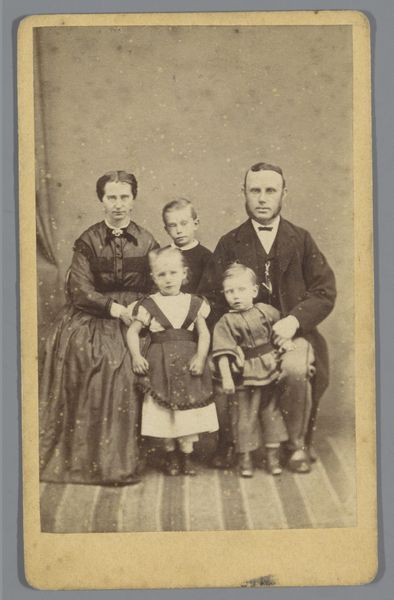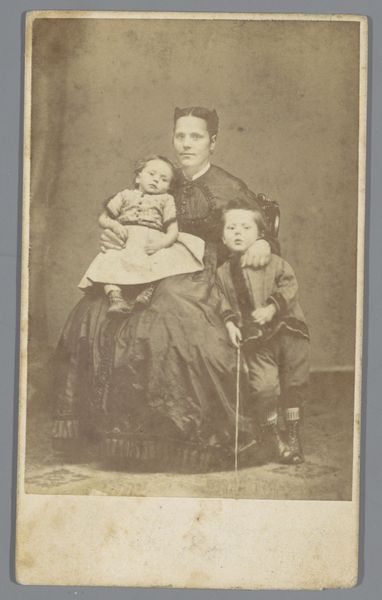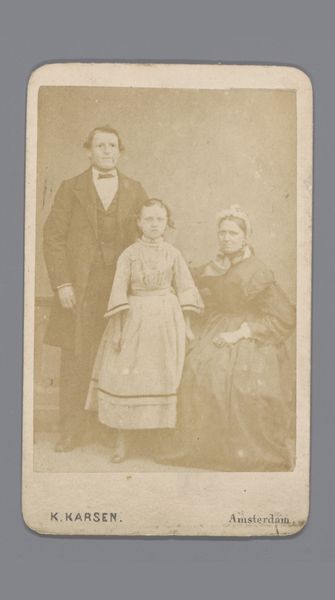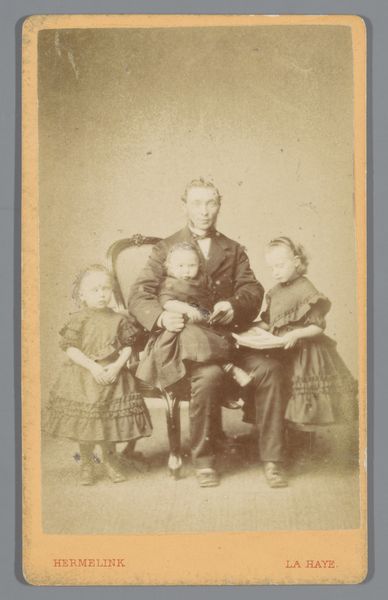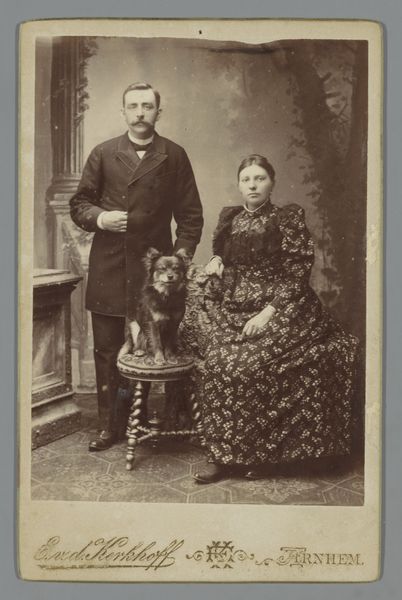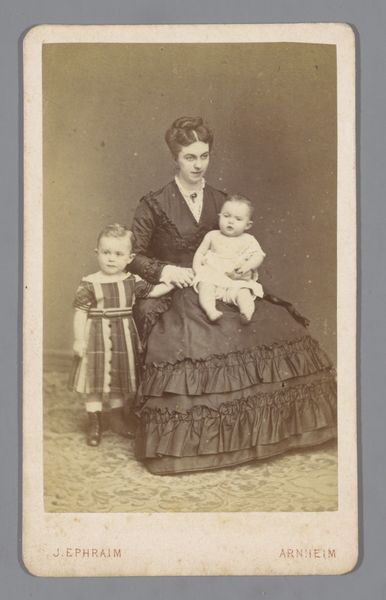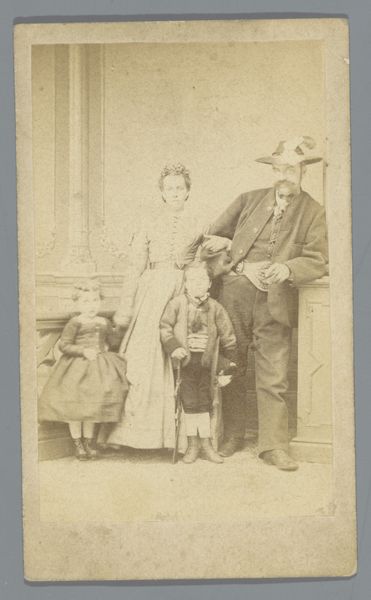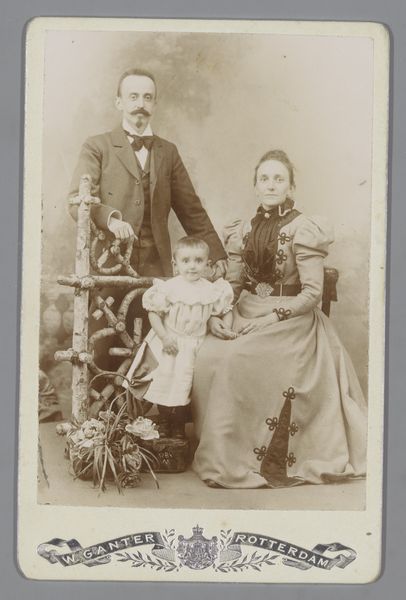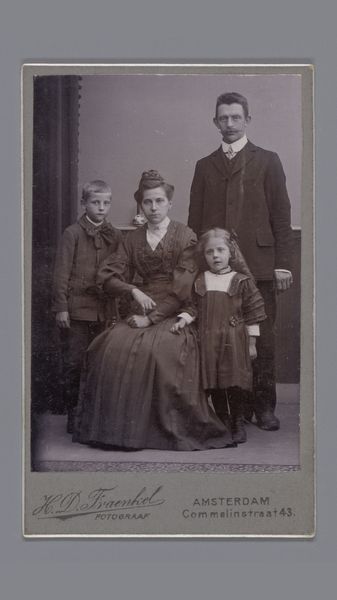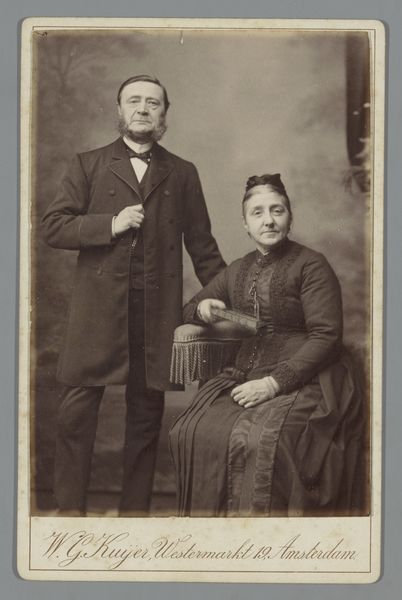
photography, gelatin-silver-print
#
portrait
#
photography
#
historical fashion
#
gelatin-silver-print
Dimensions: height 101 mm, width 63 mm
Copyright: Rijks Museum: Open Domain
Curator: This gelatin silver print, dating from 1866-1869, is titled "Groepsportret van een onbekende man, vrouw en baby," which translates to "Group Portrait of an Unknown Man, Woman, and Baby." Editor: The muted tones create an unexpectedly solemn mood. Look at how the composition centers the subjects—their attire meticulously captured, and how the patterns and lines create texture throughout the image. Curator: Absolutely. Think of this portrait as a visual marker in time. These types of family portraits, carefully staged, offered a relatively accessible mode of self-representation to the burgeoning middle class, presenting an image of stability and social propriety. Their clothing choices alone speak volumes about Victorian era societal expectations, as well as expectations concerning parenthood. Editor: I'm fascinated by the interplay of light and shadow across the figures' faces. The contrast adds dimension and seems to intensify the gravity of the expressions, drawing our attention to each specific facial detail of this solemn looking family. Curator: Indeed, we must remember that portraiture in this era wasn’t the quick snapshot we know today, requiring considerable patience from the subjects and reinforcing notions of dignified composure that speak volumes about power and societal constraints. The uniformity in their solemnness underscores what could have been a very strict patriarchal hierarchy, visually encoded through posture and expression. Editor: True, and I see a careful consideration of form. The photographer clearly understood the way visual elements like shape, line, and texture would create a unified aesthetic and sense of balance that holds the group together within this single frame. Even with what might read as somber or strict today, this feels remarkably unified and balanced through tone and detail. Curator: This photograph captures not only a specific aesthetic, but it offers us a glimpse into the construction of identity and family within a rapidly evolving social landscape. By thinking through material culture—the clothing, the set decor—we might start understanding lived experiences from the distant past. Editor: In closely studying such details of its visual language, one can really unpack meaning embedded in formal structure as a mode of deeper, critical reflection.
Comments
No comments
Be the first to comment and join the conversation on the ultimate creative platform.

